Rapid ice loss continues through June
Average June ice extent was the lowest in the satellite data record, from 1979 to 2010. Arctic air temperatures were higher than normal, and Arctic sea ice continued to decline at a fast pace. June saw the return of the Arctic dipole anomaly, an atmospheric pressure pattern that contributed to the record sea ice loss in 2007.
Figure 1. Arctic sea ice extent for June 2010 was 10.87 million square kilometers (4.20 million square miles). The magenta line shows the 1979-2000 median extent for that month. The black cross indicates the geographic North Pole. Sea Ice Index data. About the data. —Credit: National Snow and Ice Data Center. High-resolution image
Arctic sea ice extent averaged 10.87 million square kilometers (4.20 million square miles) for the month of June, 1.29 million square kilometers (498,000 square miles) below the 1979-2000 average and 190,000 square kilometers (78,000 square miles) below the previous record low for the month of 11.06 million square kilometers (4.27 million square miles), set in 2006. In June, ice extent declined by 88,000 kilometers (26,000 square miles) per day, more than 50% greater than the average rate of 53,000 kilometers (20,000 square miles) per day. This rate of decline is the fastest measured for June.
During June, ice extent was below average everywhere except in the East Greenland Sea, where it was near average.
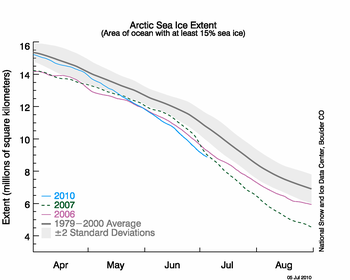
Figure 2. The graph above shows daily Arctic sea ice extent as of July 5, 2010. The solid light blue line indicates 2010; dashed green shows 2007; solid pink shows 2006, and solid gray indicates average extent from 1979-2000. The gray area around the average line shows the two standard deviation range of the data. Sea Ice Index data. —Credit: National Snow and Ice Data Center. High-resolution image
Conditions in context
At the end of May 2010, daily ice extent fell below the previous record low for May, recorded in 2006, and during June continued to track at record low levels. By the 30th of June, the extent was 510,000 million square kilometers (197,000 square miles) below the same day in 2006.
Weather conditions, atmospheric patterns, and cloud cover over the next month will play a major role in determining whether the 2010 sea ice decline tracks at a level similar to 2007, or more like 2006. Although ice extent was greater in June 2007 than June 2006, in July 2007 the ice loss rate accelerated. That fast decline led up to the record low ice extent of September 2007.
However, it would not be surprising to see the rate of ice loss slow in coming weeks as the melt process starts to encounter thicker, second and third year ice in the central Arctic Ocean. Loss of ice has already slowed in the Beaufort and Chukchi Seas due to the tongue of thicker, older ice in the region noted in our April update.
Figure 3. Monthly June ice extent for 1979-2010 shows a decline of 3.5% per decade. —Credit: National Snow and Ice Data Center. High-resolution image
The linear rate of monthly decline for June over the 1979-2010 period is now 3.5% per decade. This year’s daily June rate of decline was the fastest in the satellite record; the previous record for the fastest rate of June decline was set in 1999. This rapid decline was in large part driven by ice loss in Hudson Bay.
Figure 4. This map of sea level pressure for June 2010 shows a return of the Arctic dipole anomaly pattern, with unusually high pressure (yellow and orange) over the northern Beaufort Sea and unusually low pressure (purple and blue) over the Eurasian coast. —Credit: National Snow and Ice Data Center courtesy NOAA/ESRL Physical Sciences Division. High-resolution image
The record low ice extent of September 2007 was influenced by a persistent atmospheric pressure pattern called the summer Arctic dipole anomaly (DA). The DA features unusually high pressure centered over the northern Beaufort Sea and unusually low pressure centered over the Kara Sea, along the Eurasian coast. In accord with Buys Ballot's Law, this pattern causes winds to blow from the south along the Siberian coast, helping to push ice away from the coast and favoring strong melt. The DA pattern also promotes northerly winds in the Fram Strait region, helping to flush ice out of the Arctic Ocean into the North Atlantic. The DA pattern may also favor the import of warm ocean waters from the North Pacific that hastens ice melt.
June 2010 saw the return of the DA, but with the pressure centers shifted slightly compared to summer 2007. As a result, winds along the Siberian coastal sector are blowing more from the east rather than from the south. Whether or not the DA pattern persists through the rest of summer will bear strongly on whether a new record low in ice extent is set in September 2010.
Figure 5. This satellite image, acquired by the Moderate Resolution Imaging Spectroradiometer (MODIS) aboard the NASA Terra satellite on June 30, 2010, shows that Nares Strait was open and sea ice was flowing through it. Normally, Nares Strait remains plugged by an "ice arch" through early July, but this year it was clear by May. —Credit: National Snow and Ice Data Center courtesy NASA/GSFC MODIS Rapid Response. High-resolution image
Although the export of sea ice out of the Arctic Ocean through Nares Strait is very small in comparison to the export through Fram Strait, the Lincoln Sea contains some of the Arctic’s thickest ice. For the ice flux rates out of Nares strait, see Figure 5a.
Figure 6. The graph above shows daily Antarctic sea ice extent as of July 5, 2010. The solid light blue line indicates 2010; dashed green shows 2007, and solid gray indicates average extent from 1979 to 2000. The gray area around the average line shows the two standard deviation range of the data. Sea Ice Index data. —Credit: National Snow and Ice Data Center. High-resolution image
While recent studies have shown that wintertime Antarctic sea ice has a weak upward trend, and substantial variability both within a year and from year to year, the differences between Arctic and Antarctic sea ice trends are not unexpected. Climate models consistently project that the Arctic will warm more quickly than the Antarctic, largely due to the strong climate feedbacks in the Arctic. Warming is amplified by the loss of ice cover in the Arctic Ocean in areas that had been ice-covered for decades, and by the warming of Arctic lands as snow cover is lost earlier and returns later than in recent decades.
Moreover, rising levels of greenhouse gases and the loss of stratospheric ozone appear to be affecting wind patterns around Antarctica. Shifts in this circulation are referred to as the Antarctic Oscillation (AAO). As greenhouse gases have increased, and especially when ozone is lost in spring, there is a tendency for these winds to strengthen (a positive AAO index). The net effect is to push sea ice eastward, and northward, increasing the ice extent. As the current sea ice anomaly has developed, the AAO index has been strongly positive. See the NOAA AAO Index Web site. For more information about the differences between sea ice dynamics in the Arctic and Antarctic, see the NSIDC All About Sea Ice Web site.
Link: http://nsidc.org/arcticseaicenews/
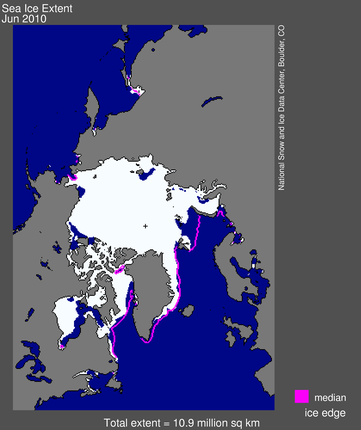
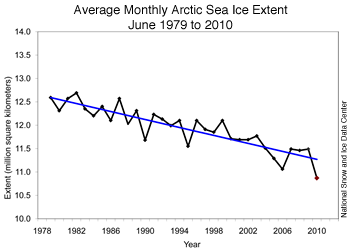
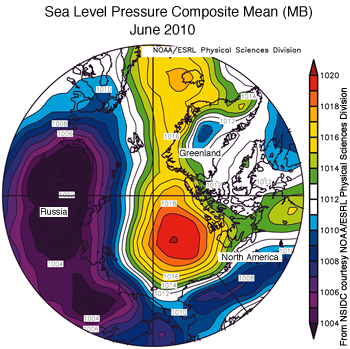
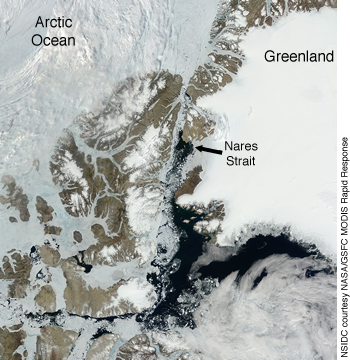
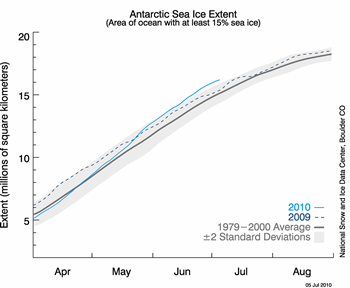







No comments:
Post a Comment